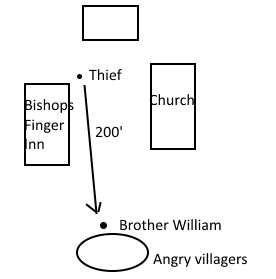Avoid the problem
There are two situations:
- the players initiate combat; and,
- the enemies initiate combat.
Situation 1: When the players initiate combat
When the players are thinking about starting a fight they can state something like:
PC: I survey the area to assess our tactical position.
At that point you can draw/build/setup your combat map. When the players can view the map they can still decide that combat would be a foolish choice the NPCs will most of the time react without knowing that the players contemplated a direct attack.
You can even make the accuracy of the initial map depending on a skill check (e.g. perception, knowledge dungeoneering, or profession soldier): on success you draw an accurate initial map, on failure the map you initially draw misses some vital details that the PC overlooked.
When the players ask for maps in situations where they would easily murder the NPC(s) and you don't want to draw a map you can tell them that the situation looks like they have overwhelming tactical advantage and if they decide to fight they will easily win and can murder the NPCs should they want to.
Situation 2: When the enemies initiate combat
In this situation the players should not whine about not having engaged in combat would they have known the situation, since its not the PCs deciding to start combat.
When the map is drawn the PCs can still decide to try to escape as quickly as they can.
Extra 1: setting up maps to create tension
Sometimes you as a GM can decide to draw a combat map before the combat has started; e.g.:
GM: "When you enter the room, you immediately feel the tension of the situation. A quick scan reveals the following situation:"
GM: Draws the combat map
GM: "However, the others keep their swords sheathed. What do you do?"
This will immediately convey the feeling to the players that combat is imminent and only cleverness or good diplomacy will allow them to avoid it; here we use unavoidable metagaming to enhance the atmosphere.
Extra 2: Not drawing a map even when a player requests it
In some situations the PCs are such an overwhelming force that you as GM hadn't even considered that the players would decide to fight (even taking into account that they are a bunch of murderous cretins ;) ).
Instead of having to come up with a map and draw it, you can tell the PCs that their assement of the situation is that they would easily 'win' any fight and that they would be able to "murder" the NPCs without any problems if they so choose.
Ofcouse, you should keep your promise (at least most of the time, there might be a failed skill check or some deception by the NPCs in play).

